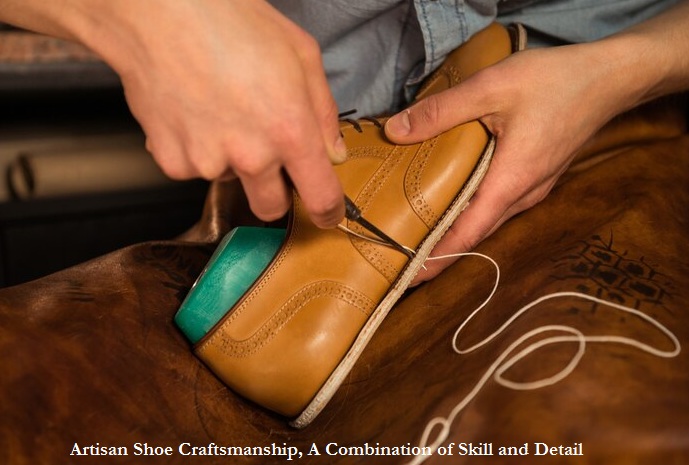Artisan shoe craftsmanship goes through several stages to get a pair of quality shoes. In this case, it is important to pay attention to thoroughness. It requires time, skill, and attention to detail. In the end, the shoes created have a long service life.

Stages of Artisan Shoe Craftsmanship
The process of artisan shoemaking, or hand-crafting, is an art that requires high skill and attention to detail. The following is an overview of how the shoe works process.
Initial Design
First is the process of making the initial design of the shoe. These designs often involve hand sketches or computer design software to create prints and rough drawings of shoes.
Material Selection
Second is the material selection stage. There are various types of artisan shoe materials. There are leather, canvas, or exotic materials such as crocodiles or snakes. Leather is a common choice because of its strength and appearance seems more classy.
Material Patterns and Pieces
Next up in artisan shoe craftsmanship is the cutting stage of patterns and materials. Before cutting the shoe material, a craftsman will make a pattern that matches the design that has been made.
This pattern determines the size and shape of the shoe. This pattern is a reference for cutting shoe parts from raw materials so that the results of shoes do not deviate from the pattern.
Shoe Top Assembly
The upper part of the shoe, starting from the front, back, and sides, will further enter the assembly stage. The process should not be arbitrary.
Craftsmen will do it carefully, using both hand stitches and special sewing machines. The stitching process is done with great precision to ensure strength and good appearance. Although it takes longer, the result is high-quality and durable shoes.
Insole Closure
The sole that is at the bottom of the shoe, will then be in the installation stage with the top carefully. The artisan shoe craftsmanship process at this stage can involve hand stitching or strong gluing, depending on the style of the shoe and the craftsman’s preference.
Insole Making
The insole is the inside of the shoe that is in direct contact with the foot. Because it is directly in contact with the feet, it must be able to provide comfort to the wearer. The insole material is usually made of leather or a comfortable material such as special foam.
Finishing
Once the shoes are formed, they will go through the finishing stage. These include staining, poles, and other surface finishes. This stage aims to give a glossy or matte final look according to the desired design.
Installation of the Outsole
The outsole is the part that is in direct contact with the soil surface. Just like the insole, artisan shoe craftsmanship on the shoe must be firm. The outsole is usually made of a durable material such as rubber or leather.
Quality Testing
Each shoe will usually undergo a series of quality tests to ensure that it conforms to the highest standards in terms of strength, comfort, and appearance.
Final Settlement
Last and foremost is quality testing. Here, the craftsman will check whether it is perfect or not.
After passing quality testing, the shoes will be packaged and ready for the delivery process to customers or to be sold in shoe stores.
With the stage above, currently artisan shoes are increasingly available. One of them was revealed on the SHOE WORKSHOP YouTube channel. The shoe is the Texture Civil Derby. When wearing it, these shoes feel comfortable. Even the toes and heels don’t hurt. The inside of the back of the shoe also has a classic shoe silhouette. This design can prevent feet from getting blistered. The quality is increasingly visible because it uses genuine leather.
Artisan shoe craftsmanship often requires a lot of time and attention to detail, resulting in shoes with high quality and beautiful looks. Every step in this process has adjusted to contemporary design tastes, resulting in a unique and elegant work of shoe art.



